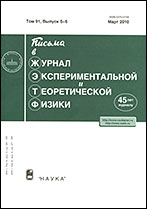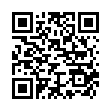|
This article is cited in 3 scientific papers (total in 3 papers)
CONDENSED MATTER
Anderson localization in a two-dimensional electron–hole system
Z. D. Kvonab, E. B. Olshanetskya, M. A. Drofaa, N. N. Mikhailova
a Institute of Semiconductor Physics, Siberian Branch, Russian Academy of Sciences, Novosibirsk, 630090 Russia
b Novosibirsk State University, Novosibirsk, 630090 Russia
Abstract:
Anderson localization is discovered in a highly disordered two-dimensional electron–hole system in a HgTe quantum well. The behavior of this localization is fundamentally different from that observed in widely studied two-dimensional one-component electron and hole systems. It is found that such system exhibits two-stage localization: two-dimensional holes are localized first, as particles with the effective mass almost an order of magnitude larger than that of electrons. Then, electrons become localized. It is also found that the system under study does not exhibit any metal–insulator transition: even at the electrical conductivity $\sigma > e^2/h$, an insulator-like temperature dependence is observed. The results for the first time draw attention to the problem of the nature of Anderson localization in a two-dimensional electron–hole system.
Received: 12.08.2021
Revised: 25.08.2021
Accepted: 25.08.2021
Citation:
Z. D. Kvon, E. B. Olshanetsky, M. A. Drofa, N. N. Mikhailov, “Anderson localization in a two-dimensional electron–hole system”, Pis'ma v Zh. Èksper. Teoret. Fiz., 114:6 (2021), 377–382; JETP Letters, 114:6 (2021), 341–346
Linking options:
https://www.mathnet.ru/eng/jetpl6513 https://www.mathnet.ru/eng/jetpl/v114/i6/p377
|


| Statistics & downloads: |
| Abstract page: | 81 | | Full-text PDF : | 1 | | References: | 21 | | First page: | 11 |
|





 Contact us:
Contact us: Terms of Use
Terms of Use
 Registration to the website
Registration to the website Logotypes
Logotypes








 Citation in format
Citation in format 
